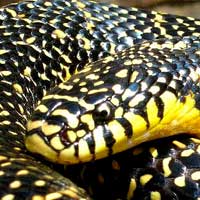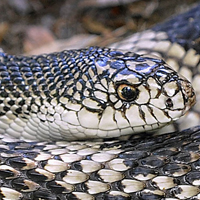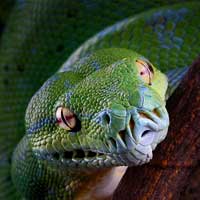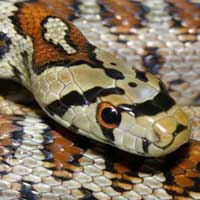All About the Hog Island Boa: A Unique Boa Constrictor
The Hog Island Boa is scientifically named Boa imperator. It belongs to the Boidae family, which includes non-venomous constrictor snakes.
Scientific Name: Boa imperator
Snake Family: Boidae
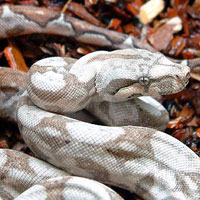
Hog Island Boa: An Introduction
The Hog Island Boa (Boa imperator) is a rare and stunning boa constrictor native to the Hog Islands off the coast of Honduras. Known for their smaller size and unique coloration, these boas are a favorite among reptile enthusiasts. Their mild temperament and adaptability make them ideal for both beginner and experienced keepers. In this guide, we’ll explore their habitat, diet, behavior, and more.
Where Do Hog Island Boas Thrive? Exploring Their Habitat
The Hog Island Boa originates from the small Hog Islands, where the environment is warm and tropical. These boas have adapted to living in dry forests and coastal regions, thriving in areas with ample hiding spots and moderate humidity.
| Habitat Feature | Description |
|---|---|
| Geography | Hog Islands, off the coast of Honduras |
| Preferred Environment | Dry forests and coastal areas |
| Climate | Warm, tropical with moderate humidity |
What Do Hog Island Boas Eat? Diet and Feeding Guide
The Hog Island Boa is a carnivorous species, primarily feeding on small mammals and birds in the wild. In captivity, their diet should mimic their natural feeding habits to ensure their health and longevity.
- Juveniles: Feed on pinky mice or small rodents every 5-7 days.
- Adults: Feed on larger prey, such as rats, every 10-14 days.
- Prey Size: Always choose prey that is no larger than the snake’s girth.
- Feeding Tip: Avoid overfeeding to prevent obesity, a common issue in captive snakes.
Behavior and Temperament of the Hog Island Boa
The Hog Island Boa is known for its calm and docile nature, making it one of the most manageable boa species to keep. Their behavior can vary slightly based on individual personality, but they are generally predictable and easy to handle.
- Docile Nature: Rarely aggressive, especially when properly handled.
- Activity Level: Crepuscular, most active during dawn and dusk.
- Hunting Style: Uses ambush tactics to capture prey.
Ensuring the Health and Longevity of Your Hog Island Boa
With the right care, Hog Island Boas can live up to 20-30 years in captivity. Regular monitoring and a proper habitat are key to maintaining their health.
| Health Issue | Symptoms | Prevention |
|---|---|---|
| Respiratory Infections | Open-mouth breathing, wheezing | Maintain optimal temperature and humidity levels |
| Obesity | Excessive weight gain | Feed appropriately sized meals |
| Mites | Visible mites, itching | Regular enclosure cleaning |
The Reproductive Cycle of the Hog Island Boa
Hog Island Boas are ovoviviparous, meaning they give birth to live young. Breeding these boas in captivity requires careful attention to environmental conditions and the snakes’ health.
- Mating Season: Late winter to early spring.
- Gestation Period: Approximately 6-8 months.
- Litter Size: Typically 10-20 live young.
- Breeding Tips: Provide a temperature drop to simulate seasonal changes and encourage mating behavior.
Tips for Handling and Caring for Your Hog Island Boa
Caring for a Hog Island Boa involves creating a safe and comfortable environment while handling them gently to build trust. Their manageable size and calm demeanor make them ideal pets for enthusiasts of all experience levels.
- Provide an enclosure with a temperature gradient of 80-90°F on the warm side and 70-75°F on the cool side.
- Maintain humidity levels around 60-70% to mimic their natural habitat.
- Include climbing branches and hiding spots to enrich their environment.
- Handle gently, supporting their body fully to avoid stress.
- Clean the enclosure regularly and provide fresh water daily.



